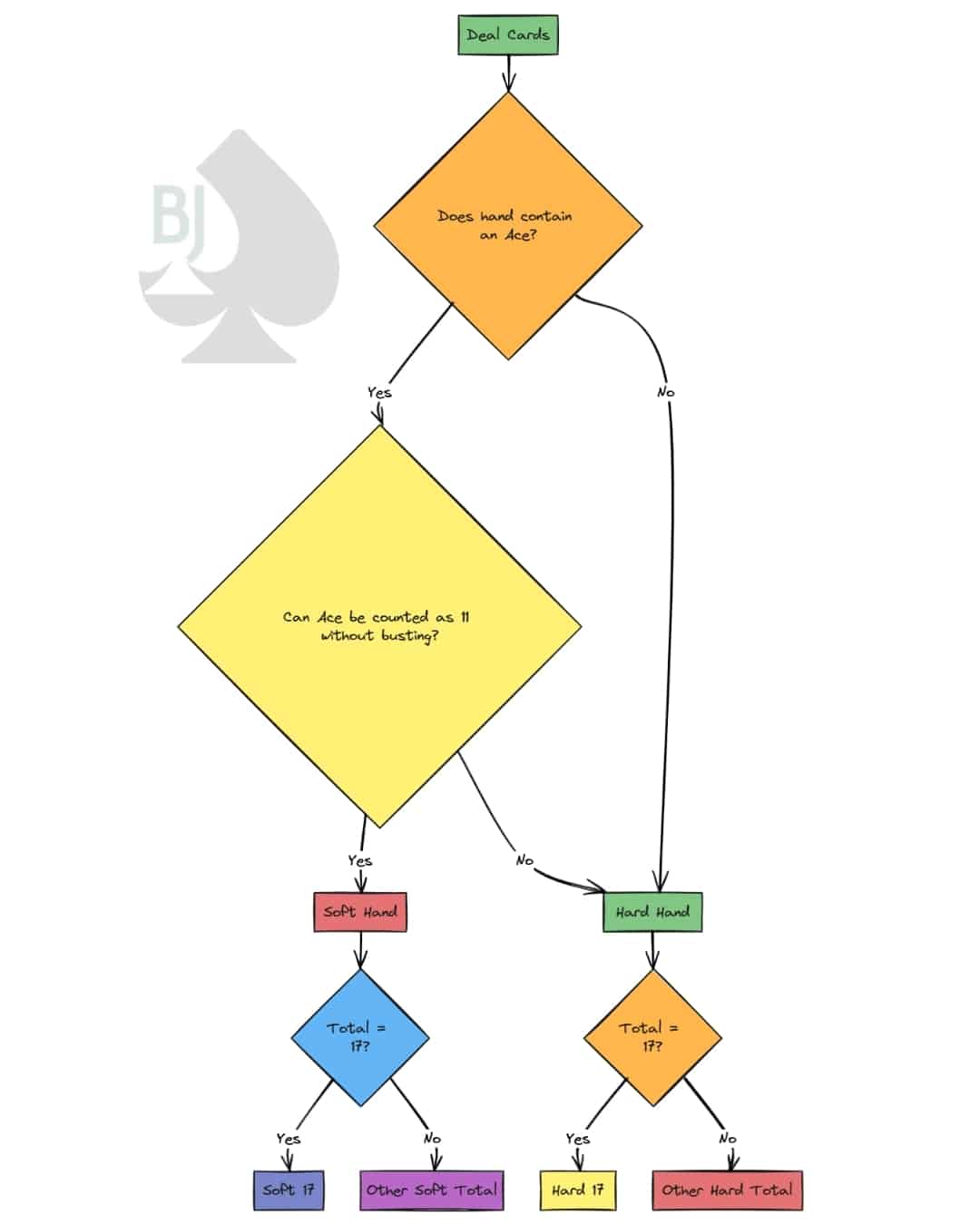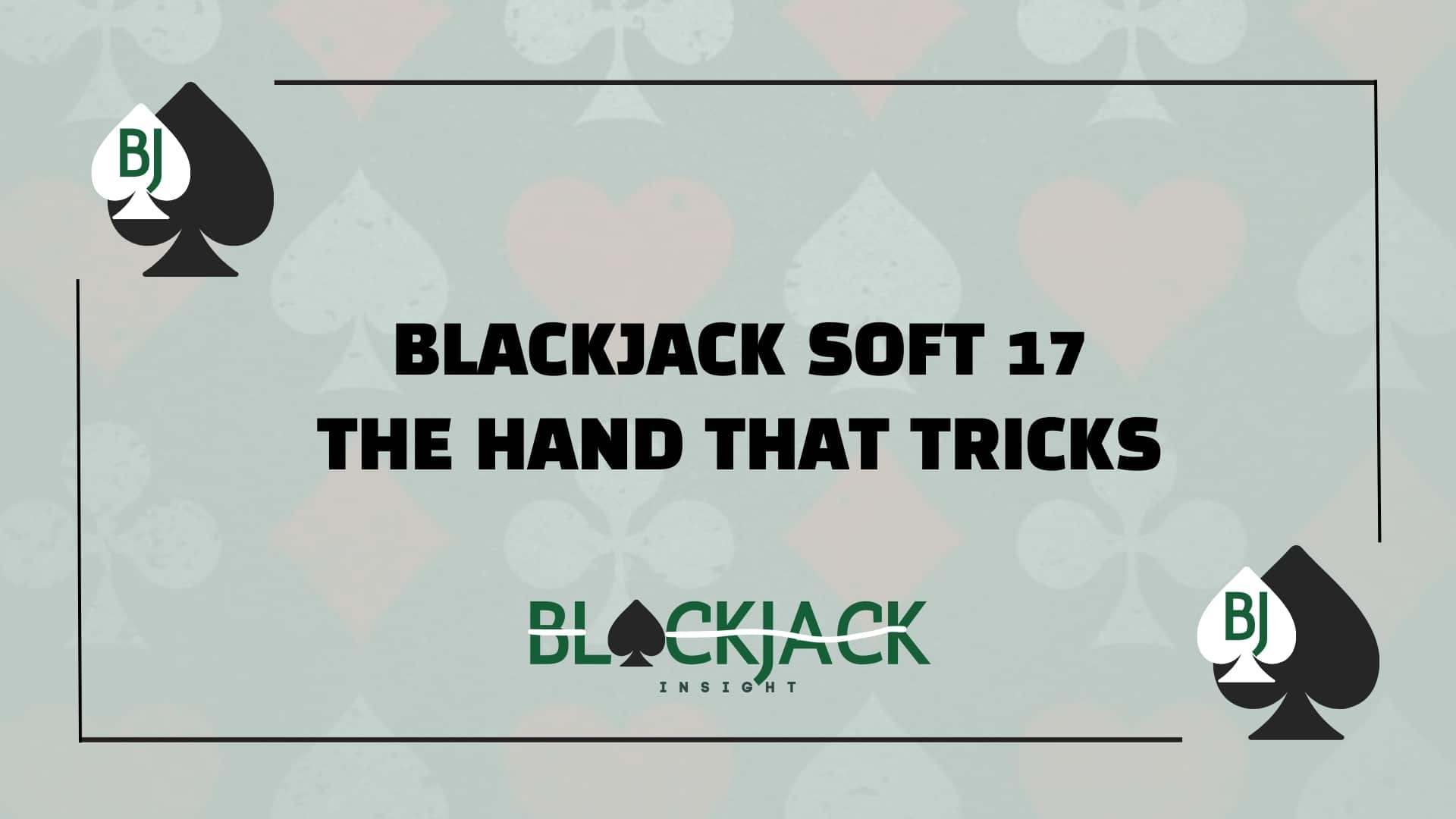Blackjack Soft 17: The Hand That Tricks
Table Of Content
A soft 17 in blackjack is any hand totaling 17 that includes an Ace counted as 11, like Ace + 6. It’s called “soft” because the Ace can also count as 1, giving the hand flexibility and reducing the risk of busting. As a player, you should almost always hit soft 17—except when you can double down against a dealer showing 3 through 6. Table rules matter too: if the dealer hits on soft 17 (H17), the house edge increases. Always look for tables where the dealer stands on soft 17 (S17) for better odds.
Let’s talk about one of the most misunderstood hands in blackjack, soft 17. If you’ve been playing casually and heard someone say “the dealer hits on soft 17,” you might’ve nodded like you knew what they were talking about. But deep down, we all think, what even is a soft 17 in blackjack? Yeah, I’ve been there.
So let’s break it down like you’re sitting at a table for the first time. No fluff, no jargon you don’t need, just straight talk about soft 17 blackjack, why it matters, and how you should actually play it.
Download Blackjack Soft 17 Chart

What Is a Soft 17 in Blackjack?
A soft 17 is any hand that totals 17 and includes an Ace counted as 11. The most common example? Ace + 6. But you could also have Ace + 3 + 3, or Ace + 2 + 4—it’s still a soft 17 if the Ace counts as 11.
Here’s the key thing: because the Ace can also count as 1, this hand has flexibility. If you hit and get a high card, your hand doesn’t bust right away. That’s why it’s called “soft.” It bends a little before it breaks.
Now contrast that with a hard 17—say a 10 + 7. No wiggle room. You hit and get a face card? You’re toast.
Why Soft 17 Is a Big Deal at the Table
Let’s get this straight: whether you or the dealer has a soft 17 changes everything.
You see, casino rules vary, and one of the most important variations is whether the dealer hits or stands on soft 17. Some tables say, “Dealer must hit soft 17” (you’ll see H17 on the felt). Others say “Dealer stands on soft 17” (S17). That one rule can swing the house edge noticeably.
If the dealer hits on soft 17, the house gains about 0.2% more edge. Sounds small, right? But trust me, over hundreds of hands, it adds up.
I remember playing at a Vegas table once where I didn’t notice the H17 rule until I’d been there an hour. That oversight cost me big. Ever since then, I have always checked the table rules before placing a bet.
How to Play Soft 17 as the Player
Okay, now let’s flip the focus. You’ve got soft 17—what do you do?
Here’s the honest answer: You almost never want to stand on soft 17.
Yeah, I know, 17 sounds like a “safe” hand. But it’s weak. It’s not enough to beat the dealer unless they bust, and you still have that Ace acting as a cushion.
So what’s the move?
Hit. Every time. Unless—and this is important—you’re facing a specific situation in a multi-deck blackjack game with the option to double down.
If doubling is allowed and you’re up against a dealer showing a 3, 4, 5, or 6, then double down on soft 17. Why? Because you’ve got a decent chance to land a 10-value card, bumping you to 18–21. Meanwhile, the dealer’s at risk of busting.
In every other case? Hit it.
Here’s a quick cheat sheet:
| Your Hand (Soft 17) | Dealer’s Upcard | Action |
| A+6 | 3–6 | Double if allowed |
| A+6 | 2, 7–Ace | Hit |
Simple, right?
Why Dealers Hitting Soft 17 Matters
You might be wondering—why does it matter if the dealer hits soft 17? Can’t they bust like we can?
Sure, but when the dealer has a soft 17 and must hit, they get a free shot at improving without the usual risk of busting. That gives the casino a little edge.
Think of it this way: imagine the dealer shows an Ace + 6. If they hit and draw a 4, now they’re sitting on 21. But if they stood on soft 17, you’d have had a real shot to win.
Bottom line: Tables where the dealer stands on soft 17 are better for players. If you’re shopping for the best blackjack tables, look for S17 rules whenever you can.



